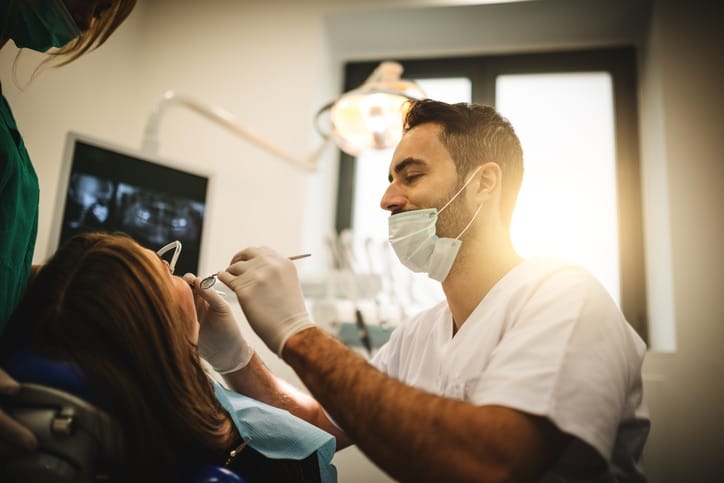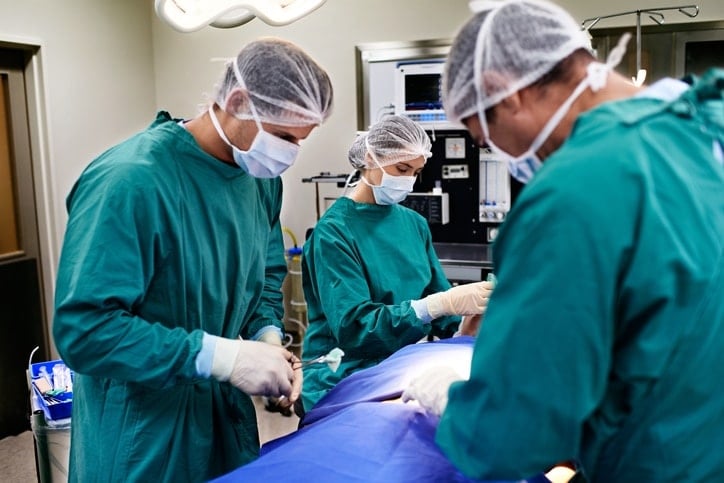How does bone grafting work?
If your dentist believes that your jawbone is not strong enough to support a dental implant they will immediately look at the option of strengthening the bone through bone grafting. This is a surgical procedure that replaces missing bone with one of several bone source materials, including both natural bone material or synthetic bone material. To begin the bone grafting surgery, your oral surgeon will most likely use general anesthesia to put you to sleep. They will then make an incision in your gum tissue above where the bone graft is required and begin shaping the area where the bone graft will be performed.
Once the oral surgeon has shaped the area of the jawbone that needs repair, they will place the bone source material into this area and lock it in place with some sort pin or screw. To complete the operation, your oral surgeon will stitch up the gum tissue. The bone source material will essentially trick your body into believing that it is real bone, allowing the surrounding jawbone to fuse with it during the healing period.
It can take anywhere from 4 to 7 months for the new bone material to fuse to https://www.dentalimplantsclinic.ca/emergency-dentist-toronto/the natural jawbone and properly heal. After the healing process is complete your dentist will be able to proceed with placing the dental implants.
To begin the bone grafting surgery, your oral surgeon will most likely use general anesthesia to put you to sleep. They will then make an incision in your gum tissue above where the bone graft is required and begin shaping the area where the bone graft will be performed.
Once the oral surgeon has shaped the area of the jawbone that needs repair, they will place the bone source material into this area and lock it in place with some sort pin or screw. To complete the operation, your oral surgeon will stitch up the gum tissue. The bone source material will essentially trick your body into believing that it is real bone, allowing the surrounding jawbone to fuse with it during the healing period.
It can take anywhere from 4 to 7 months for the new bone material to fuse to https://www.dentalimplantsclinic.ca/emergency-dentist-toronto/the natural jawbone and properly heal. After the healing process is complete your dentist will be able to proceed with placing the dental implants.
Source materials for bone grafting
When getting a bone graft operation for dental implants, there are several source materials that can be used to replenish the jawbone. These materials include your own bone, bone from a human cadaver, bovine bone and synthetic bone material.Using bone harvested from your body
This is by far the most effective bone source material you can use in a bone graft. Since it is from your own body, there will be very little risk of infection and no risk of your body rejecting the material. Bone harvested from your body will usually come from either your shin, hip or chin and will be removed in the form of a tiny block that should fit perfectly into the area of the jawbone that needs it.
The main problem with using bone from your own body is that it will require two surgical procedures; one to harvest the bone material and the other to place it into the jawbone. As a result this method will take longer, require more healing time and cost quite a bit more than the other options.
Bone harvested from your body will usually come from either your shin, hip or chin and will be removed in the form of a tiny block that should fit perfectly into the area of the jawbone that needs it.
The main problem with using bone from your own body is that it will require two surgical procedures; one to harvest the bone material and the other to place it into the jawbone. As a result this method will take longer, require more healing time and cost quite a bit more than the other options.
Bone from a human cadaver
Another very popular option for bone grafting material is to use bone that has been harvested from a human cadaver. Similar to using bone material from your own body, human cadaver bone material will rarely cause infections or be rejected by your body. Using this option will also only require one surgical procedure making it much more cost effective than using your own bone.Bovine bone material
Using bone material that has been harvested from a deceased cow is also a great option for dental implant bone grafts. When using this type of material, the bone is adequately sterilized to significantly minimize the chance of infection. Using this bone material has also proven to be very effective in integrating with the surrounding jawbone. Its effectiveness and low cost make bovine bone material one of the most popular options in dental bone grafts.
Its effectiveness and low cost make bovine bone material one of the most popular options in dental bone grafts.